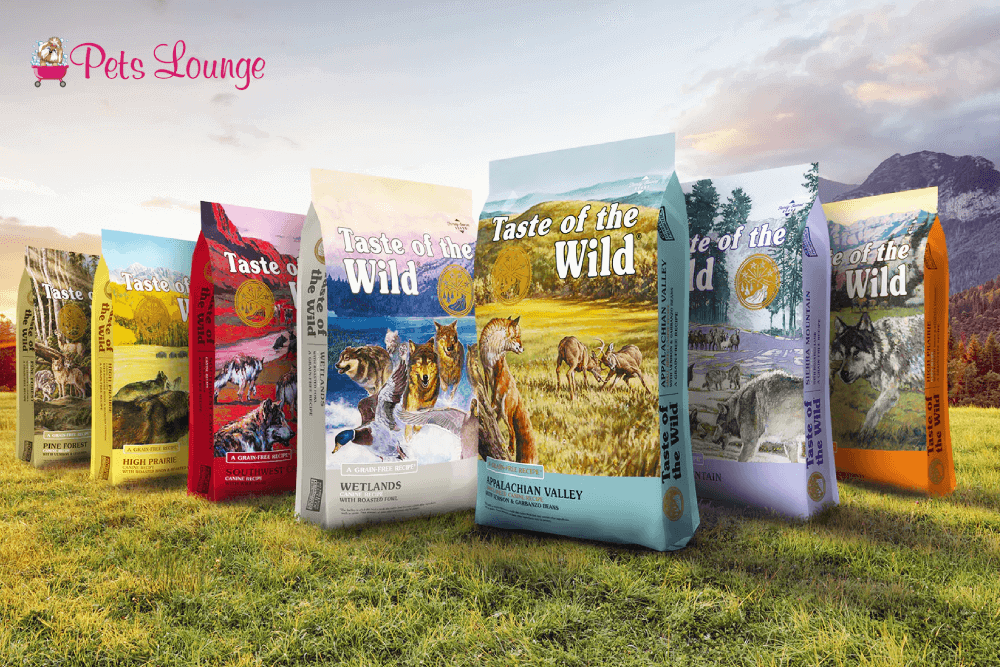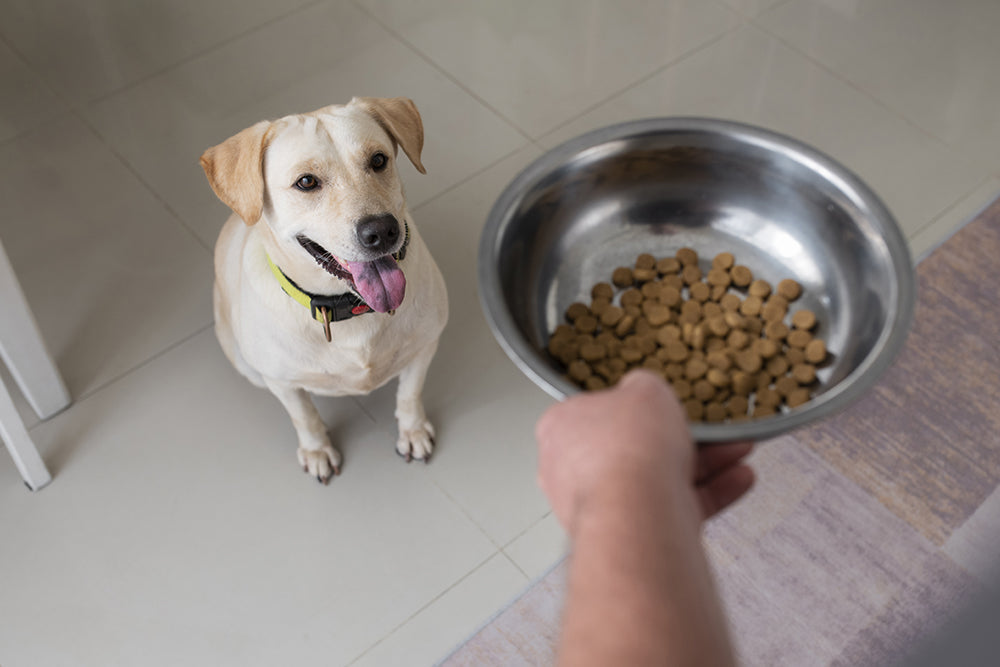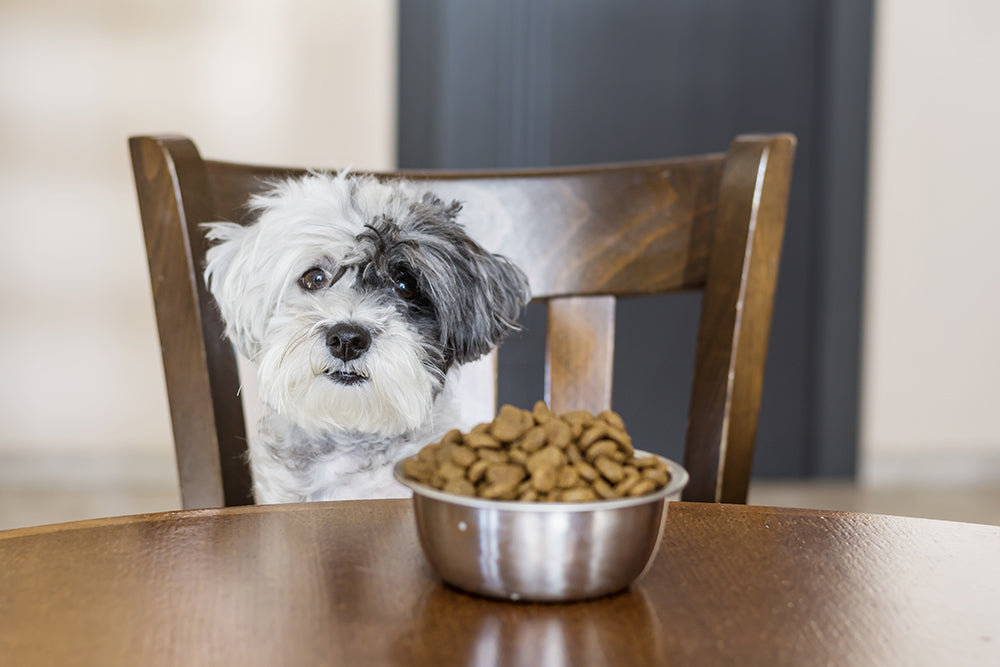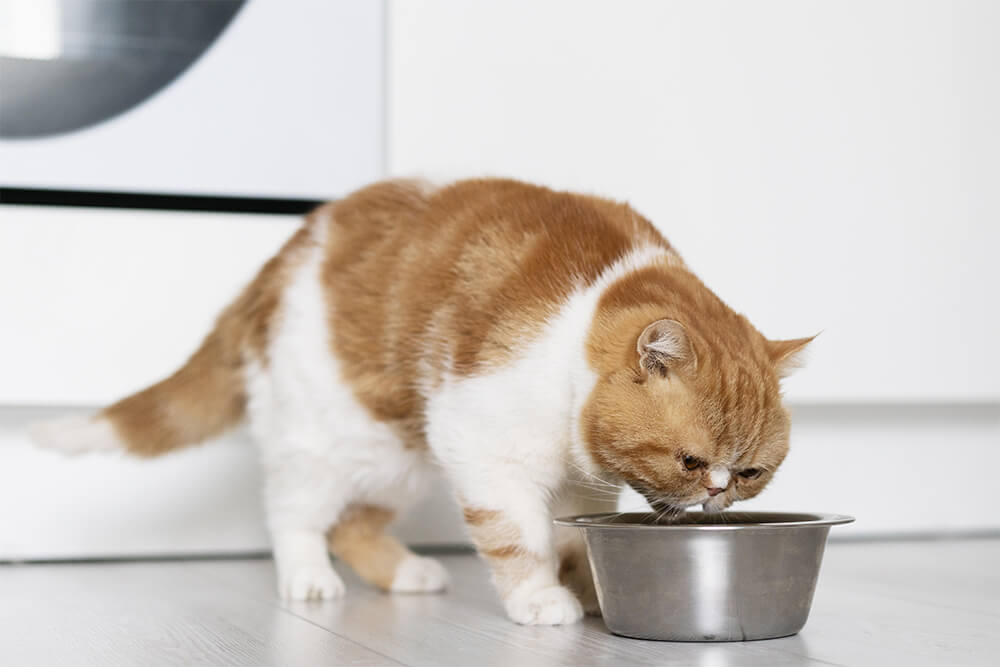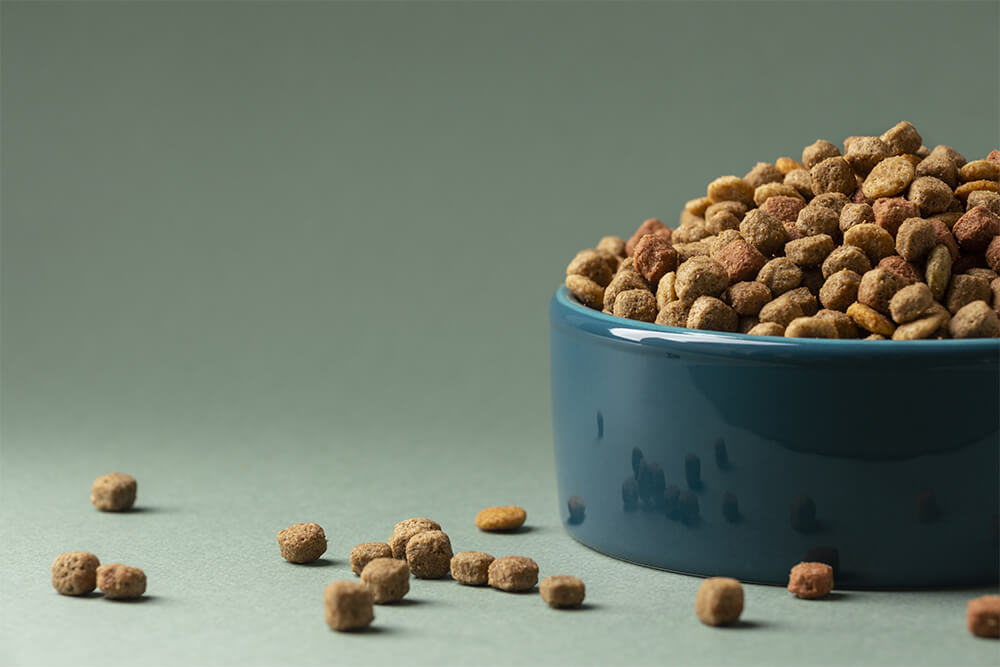News
Dog Wet Food vs Dry Food: Which is Better?
If you are a proud dog owner, you want to make sure your furry friend is eating a balanced diet that meets his nutritional needs. As you explore the available options, you may wonder whether wet dog food or dry food is the better choice. In this article, we will delve into the differences between wet dog food and dry dog food. Our goal is to help you make an informed decision about choosing wet or dry food for your beloved pet. So let's get started! Understanding Dog Wet Food Wet dog food, also known as canned food, has a higher moisture content compared to dry food. This makes it an excellent choice for dogs that need to stay hydrated or have difficulty drinking enough water. Wet food also tends to be more palatable, making it an excellent option for picky eaters or dogs who have lost their appetites. When selecting a dog's wet food, it's essential to understand the ingredients and nutritional value. Look for high-quality protein sources, such as chicken or fish, and avoid fillers like soy or wheat. It's also a good idea to check the label and ensure the food meets the Association of American Feed Control Officials (AAFCO) standards for balanced nutrition. Types of Dog Wet Food There are different types of wet foods available for dogs, including patties, stews, and gravy. It's important to choose a type that is suitable for your dog's age, size, and health condition. For example, puppies may require a food with higher protein and fat content, while senior dogs may need a diet tailored to their specific health needs. Feeding Dog Wet Food Feeding guidelines for dog-wet food vary based on the brand and type of food. Generally, it's recommended to feed your dog twice a day, dividing their daily food intake into two equal portions. It's also a good idea to serve the wet food at room temperature and remove any uneaten food after 20-30 minutes to prevent spoilage. Overall, dog-wet food can be an excellent option for meeting your furry friend's nutritional needs and providing them with a tasty and hydrating meal. However, it's essential to understand the formulation, ingredients, and feeding guidelines to make the best choice for your dog's health and well-being. Understanding Dry Food Dry food, also called kibble, is a popular option for many dog owners due to its convenience, longer shelf life, and cost-effectiveness. Understanding the manufacturing process and key ingredients can help you select the right dry food for your furry friend's needs. Manufacturing Process Dry dog food is made through a process called extrusion, where ingredients are mixed, cooked, and then pushed through a machine to create the kibble shape. The kibble is then dried, cooled, and coated with fat or other flavor enhancers to make it more palatable. Key Ingredients Dry dog food typically contains a mix of meat, grains, and vegetables. Look for high-quality protein sources such as chicken, lamb, or fish, as well as whole grains such as brown rice or oats. Avoid fillers such as corn or wheat, which offer little nutritional value. Nutritional Considerations Dry dog food can be nutritionally balanced and complete, but it's essential to check the label to ensure it meets your dog's specific dietary needs. Look for foods labeled “complete and balanced” and check the foolproof analysis for protein, fat and carbohydrate content. Tips for Selecting the Right Dry Food When selecting dry dog food, consider your dog's age, health condition, and personal preferences. For example, puppies require more protein and fat than adult dogs, and senior dogs may benefit from food with joint-supporting ingredients. Consult with your veterinarian for recommendations tailored to your dog's individual needs. Benefits of Dog Wet Food Let's explore the benefits of wet food in your dog's diet. Higher Moisture Content Wet food contains more water than dry food, which may be beneficial for dogs that need extra hydration. This is particularly important for senior dogs or those with kidney problems. The moisture in wet food can also help keep your dog fuller for longer. Enhanced Palatability Dogs tend to find wet food more palatable due to its meatier texture and stronger aroma. It can be a good option for picky eaters or dogs who struggle to maintain a healthy appetite. Easier Digestion The soft texture of wet food makes it easier for dogs to digest. This can be especially helpful for dogs with dental issues or those who have difficulty chewing. Additionally, the high moisture content of wet food may aid in digestion and reduce the risk of constipation. Better Hydration Adequate hydration plays a vital role in maintaining your dog's overall health and thriving condition. Wet food can help to keep your dog hydrated, which is particularly important during hot weather or after rigorous exercise. Hydration is also crucial for dogs with certain health conditions, such as urinary tract problems. Benefits of Dry Food Dry food, also known as kibble, has several advantages making it a popular choice among dog owners. Let's take a closer look at the benefits of dry food. Dental Health Improvement Chewing dry food helps to scrape off the plaque and tartar buildup from your dog's teeth, keeping their dental health in check. Additionally, some kibble brands are formulated to specifically promote dental health, reducing the risk of dental issues like gum disease. Convenience Dry food is incredibly convenient for feeding and storing. You can easily measure portions and store them for long periods without worrying about damage or mess. Plus, it doesn't require refrigeration or special preparation, making it a popular choice for busy pet owners. Longer Shelf Life Dry food has a longer shelf life than wet food, allowing you to purchase larger bags at a time and save money in the long run. This is especially helpful for pet owners with multiple dogs or those on a tight budget. Cost-Effectiveness Dry food can be a more cost-effective option compared to wet food. This is because kibble is less expensive to produce and package than wet food, which is why you'll typically find it at a lower price point. Conclusion Choosing the right food for your dog is not a decision to be taken lightly. After exploring the benefits and drawbacks of wet and dry food, you now have the necessary knowledge to make an informed decision. Remember to consider your dog's needs, such as age, health, and personal preferences, when selecting a food option. Pets Lounge UAE is your go-to destination for premium dog food that meets the highest standards of nutrition and taste. Our online pet shop offers a wide range of options to cater to your dog's specific dietary needs and preferences.
Learn moreBest Foods for Dogs with Allergies
If you're a pet parent to a dog with allergies, you understand the importance of choosing the right food. Allergies can cause significant discomfort for your furry friend, and finding a suitable dog food can be challenging. Thankfully, many allergy-friendly dog foods meet dogs with sensitive stomachs. In this guide, we'll explore some of the best options available and discuss the importance of choosing the right food for your pet. By selecting the right food, you can help reduce the risk of allergic reactions and minimize your pup's discomfort while promoting a healthier, happier life. Let's dive in and discover the best foods for dogs with allergies. Understanding Dog Allergies As a dog owner, it's critical to be aware of the potential for allergic reactions in your furry friend. An allergic reaction takes place when the immune system reacts abnormally to an external substance, which is referred to as an allergen. Dogs can be allergic to a wide range of substances, from dust and pollen to certain ingredients in their food. Common Allergens Here are some prevalent allergens for dogs: Pollen and other environmental allergens Dust mites and other household allergens Fleas and other insect bites Certain fabrics or materials Ingredients in food, such as beef, chicken, or dairy The Role of Diet in Managing Allergies In some cases, dog allergies can be controlled through dietary changes. For instance, if your dog has a food allergy, switching to a different type of dog food that does not contain the allergen may alleviate symptoms. Additionally, choosing high-quality, hypoallergenic dog food can help reduce the risk of allergic reactions in dogs with sensitive stomachs. These dog food types are specially formulated with gentle ingredients and lack common allergens. However, it is important to emphasize that making dietary modifications alone may not always be enough to effectively control allergies in dogs. In some cases, other treatments or medications may be necessary to address the underlying cause of the allergy. Features of Allergy-Friendly Dog Food There are specific features that can help ensure your dog gets the nutrients they need while reducing the risk of allergies. 1. Limited Ingredient Formulas Dog foods with limited ingredient formulas are an excellent option for pups with sensitive stomachs. These formulas typically contain a single protein source and a limited number of other ingredients, making them easier for dogs to digest. Look for options with high-quality protein sources like salmon or duck. 2. Grain-Free Options Grains are a common allergen for dogs, which is why many allergy-friendly options are grain-free. Instead of grains, these foods use alternative sources of carbs like sweet potatoes or peas. It can reduce the likelihood of digestive issues for dogs with sensitive stomachs. 3. Easily Digestible Carbohydrates Even grain-free options can still be too harsh on sensitive stomachs if they contain difficult-to-digest carbs. Look for options that use easy-to-digest carbohydrates like oatmeal or brown rice. 4. Probiotics and Prebiotics Probiotics and prebiotics can help promote a healthy gut microbiome in dogs, which may reduce the risk of digestive problems and allergic reactions. Look for foods that include these ingredients to support your pup's digestive health. 5. Free of Artificial Preservatives and Additives Artificial preservatives and additives can be harsh on sensitive stomachs and increase the risk of allergic reactions. Look for options that are free of these ingredients and instead use natural preservatives like vitamin E. Top Food Brands for Dogs With Allergies Fortunately, several top food brands specialize in creating recipes that cater to dogs with allergies. 1. Blue Buffalo Basics Blue Buffalo Basics offers a variety of limited-ingredient recipes that are perfect for dogs with allergies. Their food is free of common allergens like chicken, beef, and dairy and instead is made from high-quality protein sources like turkey and salmon. They also include beneficial ingredients like pumpkin and sweet potato for added nutrition. 2. Hill's Science Diet Hill's Science Diet has a range of prescription and sensitive stomach dog foods that are excellent for managing allergies. Their formulas are made with easily digestible proteins and limited ingredients to minimize the risk of triggering an allergic reaction. They also have options tailored to specific dietary requirements, such as grain-free and gluten-free. 3. Purina Pro Plan Purina Pro Plan offers a line of sensitive skin and stomach dog food designed to alleviate allergies and promote digestive health. Their recipes feature premium quality protein sources like salmon, lamb, and tuna and are made with easily digestible rice and oatmeal. Additionally, their food contains omega-3 fatty acids for healthy skin and coat. 4. Royal Canin Royal Canin has a range of hypoallergenic dog food options designed to reduce the risk of allergies. Their recipes are protein-rich and made with hydrolyzed soy, making it easy for dogs with allergies to digest. They also have formulas designed for specific breeds and life stages, ensuring your dog gets the nutrition he needs. Homemade Dog Food Recipes for Allergies For those who prefer to take a more hands-on approach to their dog's diet, homemade dog food recipes can be an excellent option. These recipes allow you to tailor your dog's diet to their specific allergies, and by using fresh, wholesome ingredients, you can ensure that the food is both nutritious and delicious. Beef and Carrot Recipe This recipe is perfect for dogs with beef allergies and is full of healthy, allergy-friendly ingredients. 1 pound ground turkey 2 cups mashed carrots 1 cup cooked brown rice 1 teaspoon dried rosemary 1 tablespoon olive oil Cook the ground turkey in the olive oil until browned. Add the mashed carrots, brown rice, and dried rosemary to the turkey and mix well. Serve your dog warm. Chicken and Sweet Potato Recipe This recipe is perfect for dogs with chicken allergies and is packed with vitamins and minerals. 1 pound ground beef 2 cups cooked and mashed sweet potatoes 1 cup cooked quinoa 1 teaspoon dried parsley 1 tablespoon coconut oil Cook the ground beef in the coconut oil until browned. Add the mashed sweet potatoes, cooked quinoa, and dried parsley to the beef and mix well. Serve your dog warm. Salmon and Potato Recipe This recipe is perfect for dogs with fish allergies and features wholesome, allergy-friendly ingredients. 1 pound ground lamb 2 cups cooked and mashed potatoes 1 cup cooked millet 1 teaspoon dried thyme 1 tablespoon canola oil Cook the ground lamb in the canola oil until browned. Add the mashed potatoes, cooked millet, and dried thyme to the lamb and mix well. Serve your dog warm. Conclusion Choosing the best foods for dogs with allergies is crucial to ensuring the health and happiness of your furry friend. By understanding the common causes of allergic reactions in dogs and recognizing the features of allergy-friendly dog food, you can make an informed decision when choosing the right food for your pup. Pets Lounge: Your Partner in Pet Care Pets Lounge is a leading pet store in Dubai dedicated to enhancing the lives of your beloved pets. Their commitment to quality, health, and happiness for your pets aligns with the information shared in this article about choosing the best foods for dogs with allergies. You'll find a wide range of services designed to meet your pet's specific needs. Whether it's high-quality, hypoallergenic dog food products, grooming services, and more, they have you covered.
Learn moreCat Wet Food vs. Dry Food: Which is Better?
Deciding on the best food for your feline friend can be a tough decision, especially when it comes to the age-old debate of cat wet food versus dry food. When considering the options, there are several factors to take into account. Benefits of Cat Wet Food One of the main advantages of wet food is its higher moisture content, which helps to keep cats hydrated and prevents urinary tract issues. This is especially important for cats who have difficulty drinking enough water on their own. By incorporating wet food into their diet, you can ensure they get the hydration they need to maintain optimal health. Improved palatability and digestion Another advantage of cat wet food is its highly palatable nature. The rich aroma and texture of wet food can entice even the pickiest eaters, encouraging them to consume a well-balanced meal. This is especially beneficial for cats with decreased appetite or those recovering from illness, as wet food can stimulate their appetite and help them regain their strength. Additionally, wet food is easier for cats to digest than dry food, reducing the chances of digestive issues such as vomiting and diarrhea. Support for specific health conditions For cats with certain health conditions, such as kidney disease or diabetes, wet food can be a valuable addition to their diet. The increased water content in wet food helps to flush out toxins from the kidneys and keep the urinary tract healthy. It also assists in regulating blood sugar levels, making it an ideal choice for diabetic cats. Consulting your veterinarian can help you determine the appropriate wet food formulation for your cat's specific health needs. Advantages of Dry Cat Food Dry cat food has its own set of advantages, from its longer shelf life to its convenience for cats that like to nibble on their meals throughout the day. With its low moisture content, dry cat food can be left out without spoiling, making it easier for pet owners who may not have time for multiple feeding times or frequent food changes. This is especially beneficial for cats who prefer to graze throughout the day rather than eat larger meals at specific times. One of the key advantages of dry cat food is its affordability. It tends to be less expensive compared to wet cat food, making it a budget-friendly choice for pet owners. Additionally, dry cat food is available in a wide range of brands and flavors, allowing pet owners to choose the one that best suits their cat's preferences and dietary needs. Convenience and Health Another benefit of dry cat food is its convenience. It can be easily stored in airtight containers for long periods without the need for refrigeration, making it a convenient option for pet owners who may have limited storage space or travel frequently with their pets. Additionally, the crunchy texture of dry cat food helps maintain dental health by reducing plaque and tartar buildup, promoting healthy teeth and gums in cats. You might also like: Tips for Choosing Your Cat's Food. Drawbacks of Cat Wet Food While cat wet food offers many benefits, it does come with a few drawbacks that pet owners should consider. One of the main concerns is the higher expense associated with wet food compared to dry food. The higher cost of ingredients and packaging, as well as the additional moisture content, contribute to the higher price point. This may be a deterrent for some pet owners, especially those on a tight budget. Another drawback of cat wet food is its shorter shelf life once opened. Unlike dry food, which can be stored for extended periods, wet food should be consumed within a certain timeframe to maintain its freshness and nutritional value. This can be challenging for pet owners with cats that have a smaller appetite or for households with multiple pets where larger food portions may not be necessary. Furthermore, the irresistible taste and texture of wet food can sometimes make finicky eaters dependent on it. Cats may develop a preference for the rich flavors and moist consistency of wet food, making it difficult to transition them back to dry food or other dietary options. It is important to carefully manage their diet and provide a balanced approach to ensure they receive the necessary nutrients from a variety of sources. Addressing the Concerns While the drawbacks of cat wet food exist, there are ways to address these concerns. For pet owners concerned about expense, it's worth considering the long-term health benefits of wet food. It can help prevent dehydration, especially for cats with health conditions that require increased water intake. To address the shorter shelf life, pet owners can consider purchasing smaller portions or storing larger cans in the refrigerator for extended freshness. Alternatively, feeding smaller portions more frequently can ensure that all wet foods are consumed within the recommended time frame. For cats that have become picky eaters, gradually introducing them to a combination of wet and dry food can help maintain their interest in meals while still providing the nutritional benefits of both options. This balanced approach can help prevent cats from developing strong preferences and ensure they receive a well-rounded diet that meets their nutritional requirements. Concerns with Dry Cat Food Feeding only dry cat food may raise concerns due to its higher carbohydrate content, the risk of obesity, and the need for a well-rounded diet that includes wet and dry options. While dry food is more affordable and has a longer shelf life, it is important to consider its impact on a cat's overall health. The higher carbohydrate content in dry cat food can be a cause for concern. Cats are obligate carnivores, and their natural diet consists primarily of protein. Eating too many carbohydrates can lead to weight gain and potentially health problems such as diabetes. It is necessary to monitor portions and choose low-carb dry foods. To avoid the potential downsides of eating only dry food, it is recommended to incorporate wet cat food into your feline friend's meals. Wet food has a higher moisture content, which helps maintain hydration and can be especially beneficial for cats who may not drink enough water on their own. It also provides a balanced source of nutrition and can help prevent weight gain. A combination of wet and dry cat food can provide the benefits of both types. By providing a variety of textures and flavors, you can keep your cat engaged during mealtime while ensuring they receive the necessary nutrients. When making decisions about your cat's diet, it is essential to prioritize their overall health and well-being. A well-balanced commercial diet that meets their nutritional needs is essential to ensure they live a happy and healthy life. Conclusion Ultimately, the choice between cat wet food and dry food depends on various factors, but what matters most is ensuring your feline companion receives a nutrient-rich diet that satisfies their specific nutritional needs. In conclusion, it is crucial to prioritize a cat's nutritional requirements when deciding between cat wet food and dry food. Consulting with a veterinarian can help determine the best options for your cat's needs and ensure they receive a balanced and healthy diet. Source Links https://www.petmd.com/cat/nutrition/wet-cat-food-vs-dry-cat-food-which-better https://www.dailypaws.com/cats-kittens/cat-nutrition/cat-food/wet-vs-dry-cat-food
Learn moreThe Pros and Cons of Homemade Pet Food
As pet owners, our highest desire to provide nothing but the best for our beloved furry companions. One aspect of their well-being that often comes into question is their diet. While commercial pet food is readily available and convenient, an increasing number of pet owners are turning to homemade pet food as an alternative. But is this the right choice for your pet? In this article, we will explore the pros and cons of homemade pet food to help you make an informed decision. Pros of Homemade Pet Food Control Over Ingredients One of the biggest advantages of preparing homemade pet food is the ability to have full control over the ingredients. By selecting high-quality, fresh ingredients, you can ensure that your pet receives a balanced and nutritious diet. This is particularly beneficial for pets with specific dietary requirements or sensitivities to certain ingredients. Homemade food allows you to tailor meals to meet your pet's unique needs. Avoiding Artificial Additives Commercial pet foods often contain artificial additives, preservatives, and fillers that may not be the healthiest option for your pet. By preparing homemade meals, you can eliminate these additives and provide your pet with natural, wholesome food. This can be particularly important for pets with allergies or sensitivities to these additives. Customization and Variety Homemade pet food allows for greater customization and variety in your pet's diet. You can experiment with different recipes, proteins, vegetables, and grains to keep your pet's meals interesting. This can be especially useful for picky eaters or pets who have become bored with commercial pet food options. Adding variety to their diet can also provide a wider range of nutrients and potentially improve their overall health. Bonding and Involvement Preparing homemade pet food can be a rewarding experience for pet owners. It allows for increased bonding and involvement with your furry friend as you create their meals together. Additionally, the process of cooking for your pet can be a creative outlet and provide a sense of satisfaction knowing you are directly contributing to their well-being. Cons of Homemade Pet Food Nutritional Imbalance One of the key challenges of homemade pet food is ensuring proper nutritional balance. Pets have specific dietary requirements that need to be met to maintain their health. Achieving this balance can be complex, as it requires understanding the appropriate ratio of proteins, fats, carbohydrates, vitamins, and minerals for your specific pet's breed, size, and age. Without proper guidance or consultation with a veterinary nutritionist, there is a risk of providing an unbalanced diet, which can lead to nutrient deficiencies or excesses. Time and Effort Preparing homemade pet food can be time-consuming and requires a significant commitment from pet owners. Sourcing fresh ingredients, preparing and cooking meals, and ensuring proper storage and hygiene can be labor-intensive. This can be challenging for busy individuals or those with limited culinary skills. It's important to consider whether you have the time and dedication required to consistently provide homemade meals for your pet. Cost Considerations Homemade pet food can be more expensive than commercial pet food, especially if you opt for high-quality ingredients. Additionally, you may need to invest in supplements or consult a veterinary nutritionist, which adds to the overall cost. Budget constraints can make it difficult for some pet owners to sustain homemade pet food as a long-term option. Potential Food Safety Risks Handling and preparing raw or cooked pet food carries certain food safety risks. Raw ingredients can be contaminated with harmful bacteria such as Salmonella or E. coli, which can pose health risks to both pets and humans. Proper hygiene practices, such as thorough cleaning of utensils and surfaces, safe storage, and appropriate cooking techniques, are essential to minimize these risks. Conclusion Homemade pet food offers numerous benefits, including control over ingredients, customization, and avoidance of artificial additives. However, it requires careful attention to nutritional balance, substantial time and effort, and consideration of cost implications. Before deciding to switch to homemade pet food, it's crucial to consult with a veterinarian or veterinary nutritionist to ensure that your pet's dietary needs are being met appropriately. By weighing the pros and cons, you can make an informed decision that prioritizes your pet's health and well-being. This is where Pets Lounge UAE can assist. As a leading pet store in Dubai, we offer a wide range of high-quality pet food in Dubai options. Our knowledgeable staff can guide you in selecting the right ingredients and supplements to ensure a balanced diet for your pet. We hope this article was helpful and helped you decide what type of food is best for your furry friend! https://seekforpet.com/is-pet-wants-good-dog-food/
Learn more

